Current as of: March 30, 2025 - 19:38
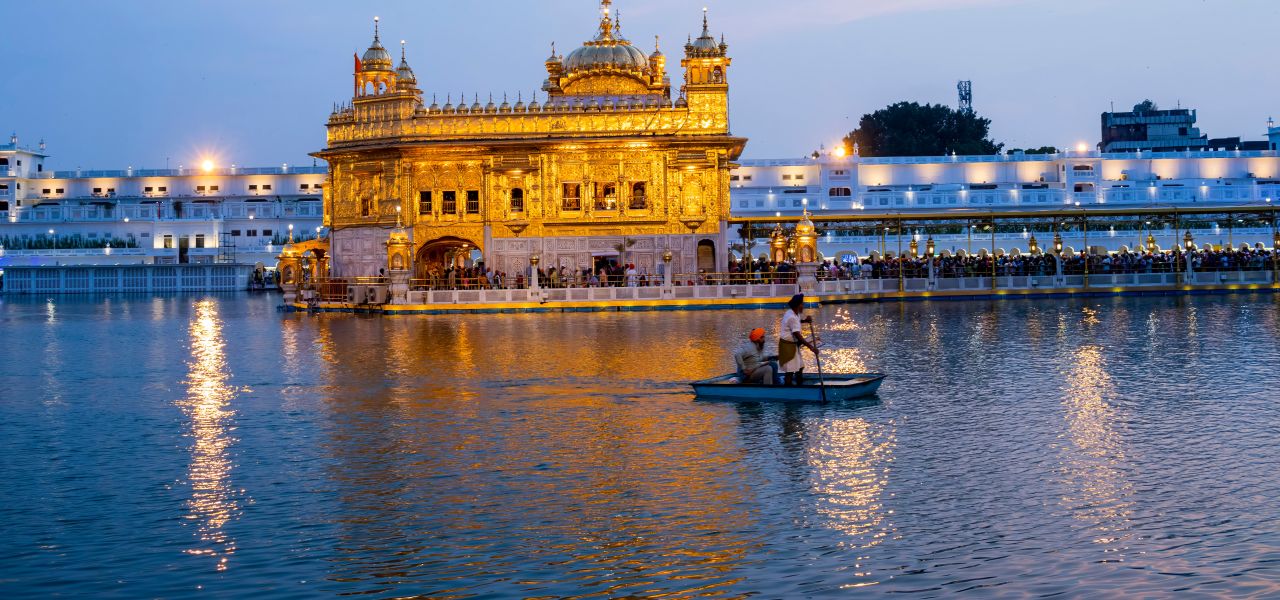
Foothills of the Himalaya Trip Notes
- Ways to Travel: Guided Group
- Destination: India
- Programmes: Culture
-
Activity Level:
2 out of 7 - Easy & Moderate
- 13 Days: Land Only
- Ages: 16+
- Trip Code: AIQ
- Carbon Footprint: 32kg CO2e
Trip Overview
Discover northern India, where many religions and cultures flourish among energetic cities and emerald hill stations
Where the plains meet the Himalaya, India is at its most vivid and complex, manifested in a profusion of religions and landscapes. Join an expert local tour leader to experience it for yourself: ashrams, monasteries, churches and gurdwaras, Amritsar’s famous Golden Temple, Tibetan culture and the Dalai Lama’s hometown of Dharamsala. Just as fascinating is watching daily life play out, meeting the friendly local people and, of course, eating the world-renowned cuisine.
At a Glance
- Accommodation: 3 Superior nights (cottages), 9 Classic nights (hotels)
- Group normally 4 to 16, plus leader. Minimum age: 16
- Travel by air-conditioned private bus and train
Highlights
- Discover magical northern India, where the plains meet the Himalaya
- Explore the yoga capital of Rishikesh, where the Beatles wrote songs for the White Album
- Enjoy a wonderfully scenic ‘toy train’ ride to Kalka
- Marvel at Amritsar’s greatest monument, the serene Golden Temple
- Head to the India-Pakistan border at sunset for the spectacular Beating Retreat ceremony
- Visit the spiritual town of Dharamsala, home of the Dalai Lama
Is This Trip for You?
This trip is rated Activity Level 2 (Easy & Moderate). For more information on our trip gradings, visit the Activity Level Guidelines page. If you have any queries about the difficulty of the trip, please contact us.
Itinerary: This trip provides an excellent introduction to northern India, with a great range of experiences and sights. It is not overly demanding, but it is a busy and active itinerary with lots to see. It takes place in the Himalayan foothills, visiting hilly towns and villages, so a reasonable level of stamina and mobility is needed.
Travel: We attempt to keep journey times to a minimum, but you must be prepared for some long drives. The roads are generally pretty good, but conditions vary. Local traffic and/or road damage after the wet season can sometimes slow us down. We mainly travel on comparatively quiet roads (which can be narrow and windy) for at least half the journey. If you suffer from travel sickness, you may find Day 7 (drive from Shimla to Palampur) and Day 10 (Palampur to Amritsar) particularly straining due to the time spent on winding hillside roads.
Monuments: The Archaeological Survey of India (ASI) is responsible for the conservation of many monuments in India. Very occasionally, this may mean that work is taking place at sites visited on this trip. As the ASI schedule is never published, it is not possible to forewarn you when work is taking place.
Group
Our Indian team of leaders has proved very popular with their incredible knowledge, passion and hospitality adding greatly to the experience. There is no better way to experience Indian culture than letting an Indian guide show you around their country.
Adult min age: 16
Min group size: 4
Max group size: 16
Itinerary
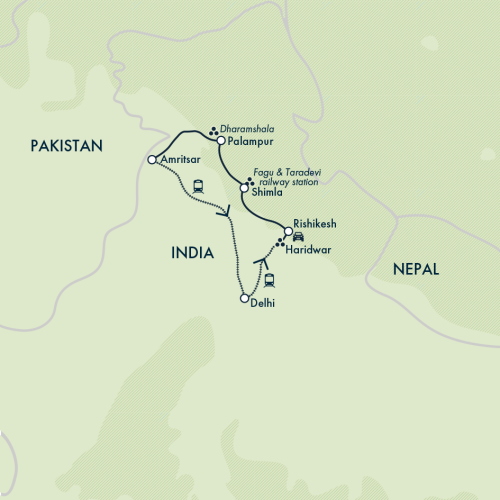
Land Only
- Start City: Delhi
- End City: Delhi
Land Only Itinerary
Flights usually depart London in the evening.
Welcome to Delhi. There are free transfers for everyone today from the airport to the hotel – check the Joining Instructions for details on how to book. The afternoon is at leisure and we have a welcome briefing later today, a good chance to get to know each other a little better and chat about our adventures ahead.
Classic accommodation: Hotel Bel Morris (or similar)
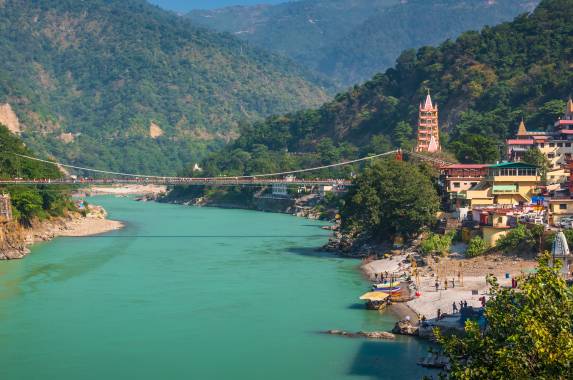
After breakfast, we transfer (approximately 45 minutes) to New Delhi railway station, where we take the train (4hr 45min) to the city of Haridwar. Upon arrival, we continue by road to Rishikesh in the Himalayan foothills. This spiritual city is considered the yoga capital of the world, but also an adventure hot spot, acting as a gateway to the Himalaya.
In the afternoon, we take a leisurely 1mi (2km) stroll from Laxman Jhula to Ram Jhula, two iconic iron and cable suspension bridges that cross the holy Ganges River. We end the day at Parmarth Niketan Ashram, watching an evening arti (a Hindu worship ritual, in which light plays an important role).
Classic accommodation: Shivansh Green Resort (or similar)
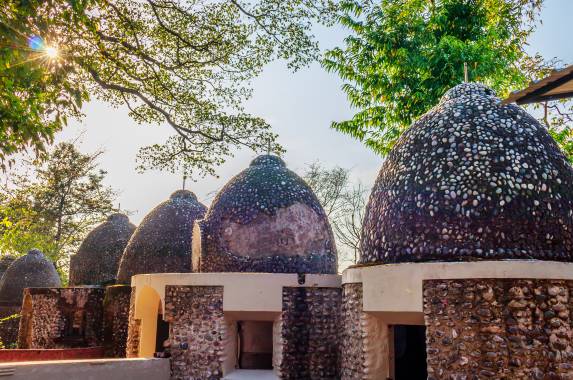
Head to the eastern bank of the Ganges this morning to visit Swarg Ashram, a complex of ashrams and ancient temples dedicated to Hindu deities, who are depicted through exquisitely carved statues.
We also visit what’s left of the Maharishi Mahesh Yogi Ashram, where the Beatles stayed in 1968 and wrote songs for the White Album. After years of neglect, the ashram is now a melancholic set of semi-ruined buildings with interesting graffiti, though work is underway to renovate the property.
Classic accommodation: Shivansh Green Resort (or similar)
We drive to Shimla after breakfast, a journey that takes seven to eight hours, but we have stops along the way. One of those is a visit to the Gurudwara Paonta Sahib, built in memory of Guru Gobind Singh, the tenth and last human Sikh Guru. Here he is said to have written the Dasam Granth, a sacred collection of writings, plus we can see a palki (palanquin) made of gold.
After, we head to the She Haat Café in Sarahan for lunch. This vital women-run cooperative serves traditional Pahari food and was created to provide financial stability and independence to women living in rural areas.
This afternoon, we continue our drive to Shimla and check into our hotel, where we spend the next three nights. Shimla was once the summer capital of the British Raj, who moved here for relief from the scorching heat of the plains.
Classic accommodation: Zion Hotel (or similar)
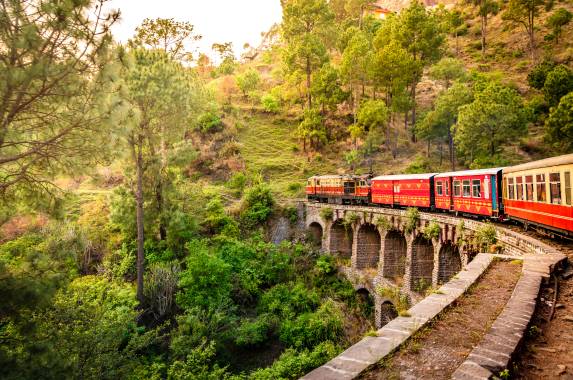
We explore Shimla today. Our first stop is the Sankat Mochan Temple, which is located amid verdant greenery and dedicated to Hindu deity Hanuman.
After, we drive to Shimla railway station to take the Viceroy’s Toy Train to Tara Devi station in the town of Kalka. Our 50-minute journey is a memorable one, as the train steadily rolls through pine forests, which open to valley and hill villages. After disembarking, we transfer a little further up the hill for a picturesque view of Shimla followed by a short scenic walk back to our vehicle.
After, we transfer (40 minutes) to Shimla’s most impressive monument: the Viceregal Lodge, a seat of imperial power and location for crucial talks prior to independence. The building is now called the Indian Institute for Advanced Studies and is used by scholars, though the woodwork inside is kept as it was during British rule.
In the afternoon, we visit the Sanat Art Foundation. This gallery and residence for artists has a scenic spot among pine and cedar trees with a view of Chedwick Fall. During our trip, we enjoy tea and see the varied and well-displayed art collection.
Classic accommodation: Zion Hotel (or similar)
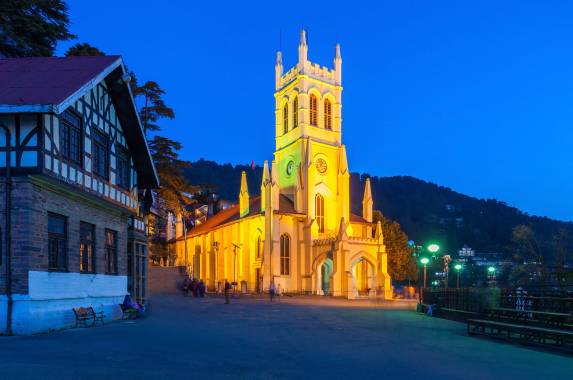
Take a one-hour transfer to the Fagu viewpoint after breakfast, where we see apple plantations, sowing fields and the snow-covered Himalaya. We then drive back to Shimla and visit the Lower Bazaar and Lakkar Bazaar, which cling to the hillside and show Shimla at its most vibrant.
We also take a leisurely stroll along the Mall Road (the main thoroughfare in Shimla) to Scandal Point – make sure to ask your tour leader about the name. En route, you can take a look inside the historic Gaiety Theatre or the neo-gothic Christ Church. Alternatively, find a spot for refreshments while viewing snowcapped Himalayan peaks, if the weather is clear.
Classic accommodation: Zion Hotel (or similar)
An early morning drive (seven hours including lunch stop) takes us to Palampur in the Himalayan foothills, which is surrounded by tea estates, pine and deodar forests, and historic temples.
This hill station is blessed with a temperate climate and verdant landscape, interspersed by narrow rivulets and streams. Here you can marvel at the snowy peaks of the Dhauladhar range (part of the Himalaya) or take invigorating nature treks through the numerous trails.
In the evening, you can join an optional walk through the forest villages to a nearby stream. Taking one to two hours (depending on the group’s pace), the adventure allows us to chat to the local people and hear about their daily lives.
Superior accommodation: Rakkh Resort (or similar)
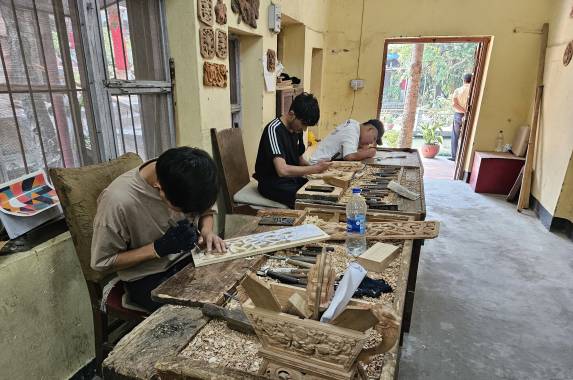
Home of the Dalai Lama, Dharamshala is a spiritual town. Here, we visit the Gyuto Tantric Monastery Temple, whose monks have a unique chanting style where they use their throats for amplification, causing an almost hypnotic effect on the listener. After, we visit the Norbulingka Institute, a tranquil space resembling a Japanese garden with neat winding stone paths, plus different workshops dedicated to Tibetan art and craft. Later, we continue to the Tibetan Museum, Namgyal Monastery (Dalai Lama Temple Complex), and Church of St John, which resides in a pine forest.
We then have a walking tour of Naddi, a forest-wrapped village with views of the Dhauladhar mountains. Walking through the narrow lanes of the village, you can observe the simplicity of the daily life here and admire traditional architecture. We see villagers engaged in farming, tending to their livestock and performing daily chores. Following our visit, we drive (1hr 30min) back to Palampur.
Superior accommodation: Rakkh Resort (or similar)
Today is about choosing your own adventure. Optional activities, which you can book at the resort, include an immersive village walk, bird-watching trek, pottery and handloom weaving experience, an authentic Himachali culinary experience, or a guided yoga session.
Accommodation: Rakkh Resort (or similar)

We drive (six hours, not including the comfort stops en route) to Amritsar. Founded in 1577 by Guru Ram Das, the fourth Sikh Guru, it is now the second-largest city in the Punjab state and important to the Sikh religion. The main attraction is the Golden Temple, one of the most revered sites in the Sikh religion. The city itself is named after the sacred tank (or Amritsar Sarovar) within, which is said to have healing powers.
In the afternoon, we visit a local Punjab village for a slow-paced exploration. Our tour starts with a tractor ride to a nearby farm to enjoy a sunset over the fields. We then gain a deeper understanding of the local lifestyle, interacting with the residents and watching (and joining) fun demonstrations.
Classic accommodation: BluSalzz Residence Amritsar (or similar)
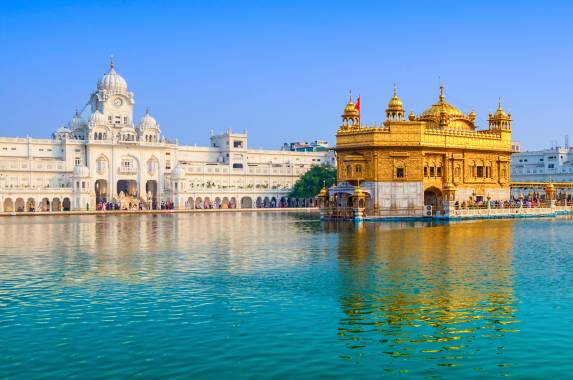
We visit the Jallianwala Bagh memorial park this morning, the site of an infamous massacre, in which hundreds of innocent Indians were killed and wounded by British troops in 1919.
After, we head to the Golden Temple. Heavily gilded and beautifully decorated, it is surrounded by a sacred pool and reached by a white marble causeway. Inside is the Guru Granth Sahib, holy book of the Sikhs.
Take in the beauty and serenity of this very welcoming temple before visiting the community kitchen, which is manned by volunteers who feed up to 100,000 people every day. After our visit, we have free time to explore the local market.
Later, we drive to a stadium on the India-Pakistan border to witness the Beating Retreat ceremony, which takes place at sunset. During this event, the Border Security Force on the Indian side and the Sutlej Rangers on the Pakistani side put on a well-coordinated and spectacular display. Flags of the two nations are ceremoniously retrieved and lights are switched on, marking the end of the day.
Around 9pm, there is an option to return to the Golden Temple to witness the Palki Sahib ceremony, in which dozens of devotees act as a human conveyor belt to carry the Granth Sahib (a shrine containing the Adi Granth) from the main shrine to the sanctum, where it is kept until the opening ceremony the following morning. You may participate in the ceremony, taking your turn to shoulder the weight of the enormous shrine.
Classic accommodation: BluSalzz Residence Amritsar (or similar)
We enjoy a cold breakfast at our hotel this morning before taking the 8.20am Vande Bharat Express train from Amritsar to Delhi. Arriving around 1.50pm, we are transferred (1hr 30min) to our hotel and have the rest of the afternoon free to relax. There’s plenty to enjoy at the hotel, including rooftop dining and swimming with views over the city. There’s also Airia Mall next door with plenty of shopping and entertainment options.
Classic accommodation: Rhythm Gurugram Hotel (or similar)
Our adventure through North India ends today. If you’ve still a few pages left in your travel diary, speak to your sales representative about extending your stay in Delhi. Alternatively, catch your free transfer to the airport and begin your return journey home – remember to provide your details at least two weeks prior to arrival to secure your seat.
Accommodation
Classic, superior and premium hotels
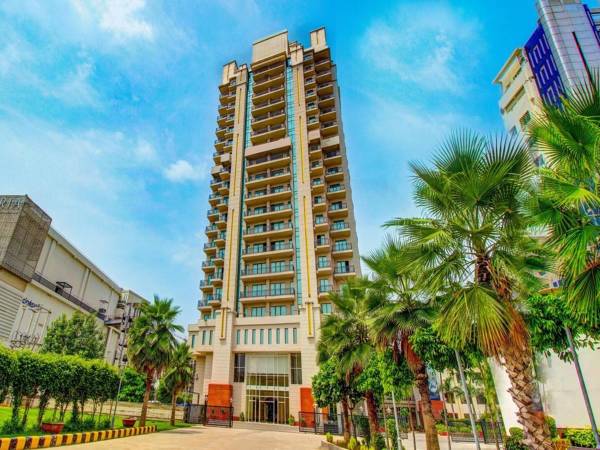
On this adventure through northern India, we have 3 Superior nights (cottages) and 9 Classic nights (hotels). The accommodations typically used are on the day-to-day itinerary. However, below are some of the notable places we stay.
Shimla: Zion Hotel (nights 4-6)
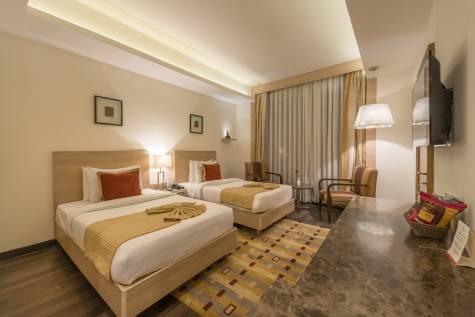
With a location high in the Shimla hills, the Zion is a tranquil retreat with views over the city and Himalaya peaks. There are plenty of spots to gaze over the mountains, but some of the best are found in Ananta, the in-house multi-cuisine restaurant, and the Elixir Lounge, where you can sip cocktails, mocktails and more.
Palampur: Rakkh Resort (night 7-9)

Backdropped by the Dhauladhar mountains, Rakkh Resort is a well-equipped property with a beautiful location and all meals included during your stay. This off-grid eco resort encourages guests to unplug and relax. Better yet, the available activities are complementary to guests, meaning you can enjoy a guided village walk, birdwatching, yoga session or more on your last day at the resort (Day 9).
Amritsar: BluSalzz Residence Amritsar (nights 10-11)
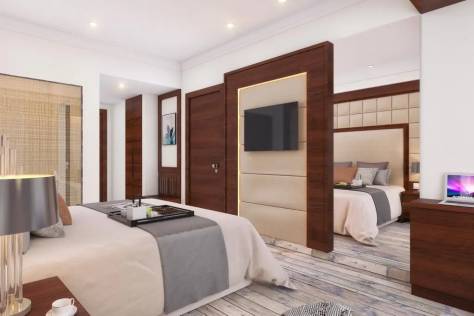
On Ranjit Avenue, BluSalzz Residence is in a buzzy part of the city, home to stores, restaurants, bars and microbreweries. The hotel itself has modern rooms, while Café BluSalzz, the in-house restaurant, serves Punjabi delicacies and there’s a rooftop pool, bar and grill.
Worth knowing
- Hotels in India usually do not have heating as there are really only a couple of months in the year when the weather can get rather cold. You can request more blankets or the hotel may be able to provide a standing heater for your room. Please talk to your tour leader if you need help in this matter.
- Twin bedded rooms are limited at Rakkh Resort in Palampur, twin-share bookings will be given priority where possible.
Single supplement from £ 560
Food & Drink
All breakfasts, three lunches and five dinners included.
Budget at least 850 Indian rupees (US$10) per person per day for lunch/dinner in the city or en-route (Veg & Non-Veg meals). You can eat out very cheaply in India, but if you go to the more expensive restaurants, you will spend more than the suggested amount. In a lot of towns, there is a choice of restaurants and a selection between Indian and Western foods; however, this is not always the case. If you are vegetarian, India is probably one of the best destinations to travel to. Tea and soft drinks are very cheap. A large bottle of beer is approximately 420 rupees (US$5). Mineral water is widely available. In a typical restaurant you can expect to pay approximately 20 Indian rupees (US$0.25) for bottled water (1 litre), 50 Indian rupees (US$0.60) for tea, and 100 Indian rupees (US$1.20) for coffee.
Transport
Transport is by private minibus, SUVs for sightseeing in Shimla and Dharamshala, and train, unless otherwise stated.
Weather & Seasonality
October to April is the ideal time to visit northern India. On the plains, days are warm to hot (18C-30C/65F-86F) and nights cool or mild (7C-15C/45F-59F), the lower temperatures experienced in the Indian winter (December through to February). Humidity is very low with little rain.
In the hills, the daytime temperatures are warm (15C-25C/59F-77F) with cool to cold nights (0C-15C/32F-59F).
Although the departures are timed to coincide when the weather is normally good, the weather is never wholly predictable in any mountainous area; therefore, you should be equipped to deal with any differences beyond the conditions described above.
Joining Instructions
Key information
Start hotel: Hotel Bel Morris, E-514, Inder Mohan Bhardwaj Marg, Block E, Greater Kailash, New Delhi, 110048
Phone: +91 11 4702 3544
Airport: Indira Gandhi International Airport (DEL)
Getting to the start hotel
The start hotel is approximately 30 minutes’ drive from the airport. Exodus provides free arrival transfers to the start hotel from the airport for all customers.
Catching your return flight
Exodus provides free departure transfers from the end hotel to Indira Gandhi International Airport (DEL) for all customers.
Please note, unless specified otherwise, the transfers will be to the start (or pre-tour) hotel and from the end (or post-tour) hotel and will be on the date on which the tour starts/ends; transfers to other hotels in the same city and/or on different dates may attract an extra charge. Transfers should be booked with your sales representative at least two weeks before the tour starts.
Full joining instructions including local emergency numbers will be sent to you as part of our Final Joining Instructions. If you do not receive these at least a week before departure, or require them earlier please contact our office or your travel agent.
Location start: Delhi
Location end: Delhi
What To Take
Essential Equipment
- Comfortable walking shoes
- Sandals/flip-flops
- Light casual clothing
- Warm sweater/fleece
- Sunhat
- Sunscreen
- Torch (flashlight)
- Backpack to carry camera, water bottle etc
- Anti-bacterial hand gel
- Small personal first-aid kit
- Mosquito repellent
- Swimwear and towel
- Water bottle
Additionally, out of respect to tradition, we recommend you pack clothes that cover the shoulders and go on or below the knee. This is particularly important when visiting temples and holy places.
For the towns, light casual clothing with a warm sweater for the cooler evenings is recommended; for November to January departures, warm clothing is essential.
Optional Equipment
- Motion sickness aids/medication (for long, windy journeys on days 7 and 10)
Prohibited items to travel with in India
- The Indian government has banned e-cigarettes and related products. You can’t buy e-cigarettes in India or bring them into the country. Please ensure you do not pack these in your luggage.
- Satellite communications devices, for example (but not exclusively) Garmin inReach or any other brand GPS tracking device, are illegal in India without a license. Please do not bring them with you.
Practical Information
Visa
India
To avoid possible problems at immigration, make sure your passport is valid for a minimum of 180 days at the time of entry into India.
Travellers from the UK, US, CA and EU normally need a visa to enter India. Please note, visa requirements often change and it is your responsibility to obtain any required visas for this trip. Therefore, we recommend that you check with the nearest embassy or consulate of your chosen destination(s), including any countries you may be transiting or transferring through.
Some local governments provide guidance on what visas their citizens need. To help, we’ve gathered a selection of useful links below.
• Australia: www.smartraveller.gov.au/destinations/asia/india
• Canada: www.travel.gc.ca/destinations/india
• United Kingdom: www.gov.uk/foreign-travel-advice/india/entry-requirements
• USA: www.travel.state.gov/content/travel/en/international-travel/International-Travel-Country-Information-Pages/India.html
Travellers eligible for an e-visa, which includes those from the UK, US, CA and EU, can apply at www.indianvisaonline.gov.in/evisa/tvoa.html.
For more information on applying for your Indian visa, please click on this link: Indian Visa Information
Vaccinations and Health
India
You require a yellow fever vaccination certificate if arriving from a country with risk of yellow fever transmission. Proof of a polio vaccination may also be required by some visitors. Please confirm all requirements and recommendations with your doctor or travel clinic.
You may also want to consider vaccinations for tetanus, hepatitis A, typhoid, cholera, hepatitis B, Japanese encephalitis, rabies and tuberculosis. The risk of malaria is slight, but you may wish to consult your doctor or travel clinic for further advice.
Additionally, dengue fever and chikungunya are known risks in India. Both are tropical viral diseases spread by daytime biting mosquitoes. There is currently no vaccine or prophylaxis available for either, and therefore the best form of prevention is to avoid being bitten. We recommend you take the usual precautions to avoid mosquito bites.
Some of our India trips spend time at altitude. In regions over approximately 6,560ft (2,000m), there is little risk of mosquito-borne diseases. For trips above 9,840ft (3,000m), there is a risk of being affected by acute mountain sickness. Our itineraries are designed to enable everyone to acclimatise to these altitudes, but you should be aware that it is still possible for you to be affected. Please see the Trip Notes for further information.
The risk of malaria on this trip is slight, but you may wish to consult your GP or travel health clinic for further advice.
Local Time
India's time zone: Asia/Kolkata (UTC +05:30)
Electricity
India's electricity: Plug types C (two round pins), D (three round pins) and M (three round pins) – 230V, 50Hz

Money
India's currency: Indian rupee (INR). Please note, it is illegal to import or export rupees. Do not accept torn or very dirty Indian banknotes from banks or in change as they will almost certainly not be accepted as legal tender in India. You can normally change money back from rupees into US dollars or British pounds at the departure airport, but you must produce an exchange receipt showing that you changed money in India.
ATM Availability
ATMs are widely available throughout the trip (Visa and Mastercard are best). You can also pay with credit cards in larger shops. Please inform your bank before departure that you are travelling to India and carry the relevant telephone number with you in case they put a block on your card.
Additionally, you should not rely on cards all the time, so bring US dollars or British pounds with you too. Money exchange facilities are available at Delhi Airport, though exchange rates may be better in central Delhi.
Extra Expenses & Spending Money
Allow at least 570 rupees (approximately US$8) per day for personal expenditures, such as soft drinks. There are also endless shopping opportunities throughout this tour and we suggest you take money for souvenirs.
Tipping
Tipping kitty: Your tour leader will offer to arrange and look after a group tipping kitty, which will be used to tip hotel staff, local guides, bus drivers and any other support staff used throughout your trip. At any time, your tour leader will happily show you an account of how the kitty is being distributed.
The tour leader will suggest how much to contribute, depending on group size, but it is usually around 3,250-3,550 rupees (approximately US$40-US$45) per person based on the maximum group size of 16 passengers.
For smaller groups, the leader may ask to collect more than the suggested amount. This helps to cover standard tipping expectations for local guides, drivers and hotel staff (which are generally fixed amounts no matter the group size).
Tour leader: Tipping of tour leaders is not included in the kitty and is at your own discretion. If you wish to show your appreciation, a tip around 410-500 rupees (US$5-US$6) per person per day would be appreciated.
Sustainability and Impact
As a certified B Corp, we’re on a mission to improve our social and environmental impact across all our adventures.
We do this through our innovative Thriving Nature, Thriving People plan.
This ‘nature positive’ approach is designed to help nature and communities thrive in harmony though practical solutions, such as reducing carbon and waste on our trips, supporting conservation projects through the Exodus Adventure Travels Foundation, and rewilding 100 square metres for every Exodus traveller.
Important Information
Your safe participation
When booking this trip, you should be confident in your ability to participate in all activities described in these Trip Notes. If you have any doubt about your suitability, please call us and ask to speak to one of the experts on this itinerary.
Although our leaders are well trained to deal with different capabilities, if they have any concerns about someone’s ability to safely take part in an activity, or their impact on other people’s enjoyment, we authorise them to take necessary action which, in some circumstances, may involve asking someone to miss that activity.
By booking this trip you agree to our Booking Conditions which clearly state that our leaders have the authority to do this. In these rare instances we will ensure anyone sitting out is safely provided for and offered alternative options where possible. Refunds will not be provided for activities missed and customers may be liable for additional costs incurred.
Seatbelts
All vehicles used by us should be equipped with working seatbelts, except where approved by us based on the vehicle type or journey. Wherever seatbelts are available, we require our customers to use them for their own safety, even where it may not be a legal requirement.
How to Book
- Check availability: Go online to check availability, or contact us by phone or email.
- Secure your place: You can provisionally hold a place on this trip, usually for between three and seven days.
- Complete your booking and payment
When you’re ready to book, go to our website for online bookings, book over the phone or you can complete a booking form (available online or on request by calling us). We accept all major credit and debit cards, or you can pay be cheque.
After booking
You will receive your booking confirmation letter and invoice, which includes extra information and guidance about your travel arrangements.
Full joining instructions, including local emergency numbers and details of how to reach the start point, will be sent to you approximately two to three weeks prior to departure. If you do not receive these at least a week before departure, or require them earlier, please contact our office or your travel agent.
Trip Note validity
These Trip Notes are valid from the “Current as” date on page one. They will occasionally be updated after booking and before departure; if there are any updates that significantly impact the inclusions or itinerary, customers will be written to separately. They will also receive a link to the most up-to-date Trip Notes with their Final Joining Instructions before travelling.
The information in these Trip Notes is given in good faith. Where differences exist between the Trip Notes and our current brochure or website, the Trip Notes supersede the brochure and website. All holidays can be subject to unexpected changes; to enjoy them you should be prepared to be flexible where necessary. Occasionally, it may not be possible to follow the itinerary as planned. This may be for a variety of reasons – climatic, political, physical or other. In these circumstances we will make the best-possible alternative arrangements that maintain the integrity of the original itinerary.
Licensing
Exodus is fully licensed and bonded as a tour operator. We hold Air Traffic Organisers Licence (ATOL) number 2582, issued and bonded with the Civil Aviation Authority (CAA). We are also bonded to the International Air Transport Association (IATA) and we are members of the Federation of Tour Operators (FTO) and ABTA – The Travel Association. This means you can book your Exodus holiday with confidence, as all money paid to us for your trip is fully protected.